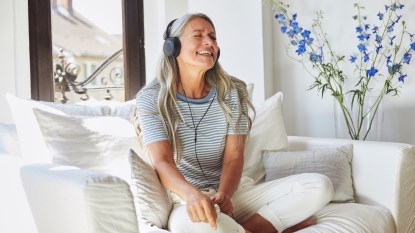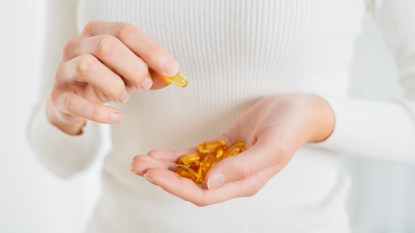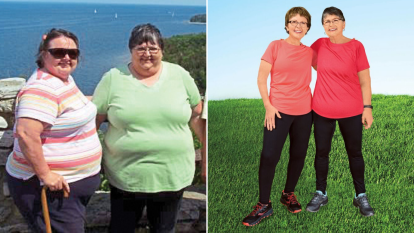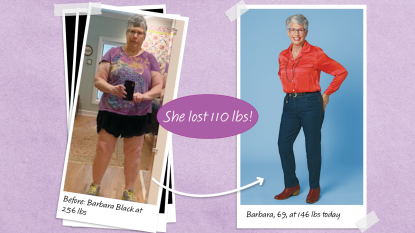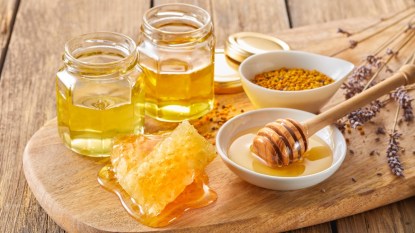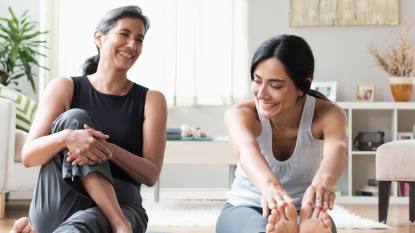Nutritionist: Pickle Juice *Does* End Leg Cramps — But Not for the Reason You Think
Getting more of a sneaky compound in pickle juice can thwart the cramps — plus 3 more tips that work
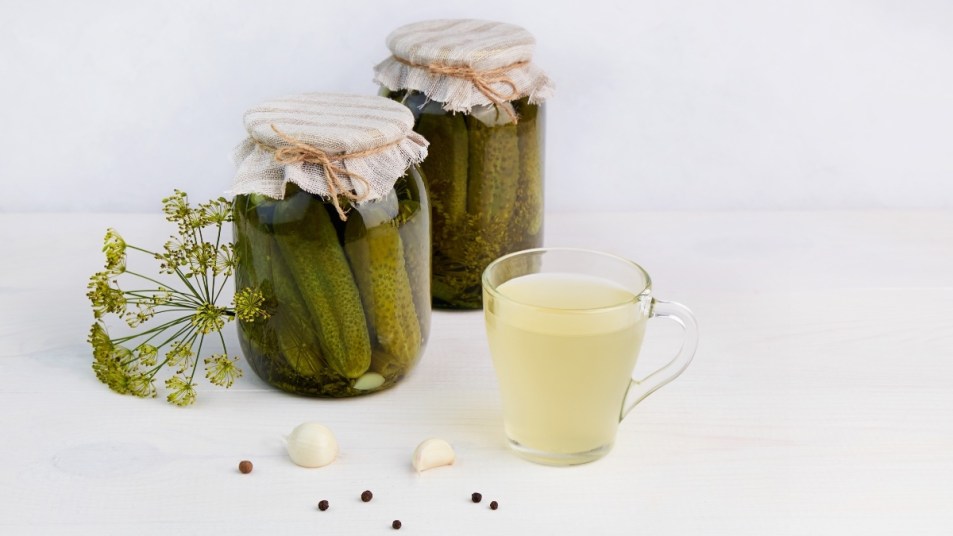
Ever been sound asleep, only to be startled awake by a stabbing pain in your calf or hamstring? These sudden, intense muscle spasms are better known as charley horses. And they happen to up to 60% of adults, according to research in the journal American Family Physician. To quash trouble, most of us rely on folk cures and home remedies. But do they actually help? It turns out taking a “shot” of pickle juice for leg cramps at night really can stop the spasms in their tracks, plus ward off future flare ups. Read on to discover the simple secret in this DIY trick.
Understanding what nighttime leg cramps are
Charley horses are muscle spasms or cramps, and they most often occur in your legs and feet. These involuntary contractions can feel like tightness in the muscle, and sometimes the muscles can feel “stuck.” In severe cases, you can actually see the muscle seize up. The spasms can last for a few seconds or up to a couple of minutes. But despite how painful they can sometimes feel, they’re unlikely to cause any damage.
The most common causes of leg cramps at night
While the exact cause of overnight leg cramps isn’t always clear, research reveals they’re more likely to occur when you’re dehydrated. This is especially common on warm days. That’s because your body’s balance of electrolytes, or minerals vital to muscle function such as sodium, potassium and magnesium, have been depleted. When you’re short on these minerals, it prevents nerves and muscles from functioning smoothly. The result: those leg muscles are more likely to seize up while you snooze.
Another common trigger is “weekend warrior syndrome“, when you overexert your muscles. Long hikes, more time spent gardening and chasing after your grandkids can all overtax your leg muscles. And even if you don’t necessarily feel sore during the day, it can manifest in nighttime leg cramps. Why? Overuse of your muscles depletes their energy stores, making them more prone to painful cramps when you finally turn in for the night.
And the problem only worsens with age. Sarcopenia, or age-related loss of muscle mass, leaves muscles weaker than they were years ago. Weaker muscles are more prone to being overtaxed — and as a result, experiencing cramps. Plus medication like diuretics and cholesterol-lowering statins we tend to take as we get older ups the risk for electrolyte balances and muscle cramping. Fortunately, home cures can help. (Interested in more ways to keep you muscles strong? Click through to see how sipping protein coffee helps prevent sarcopenia.)
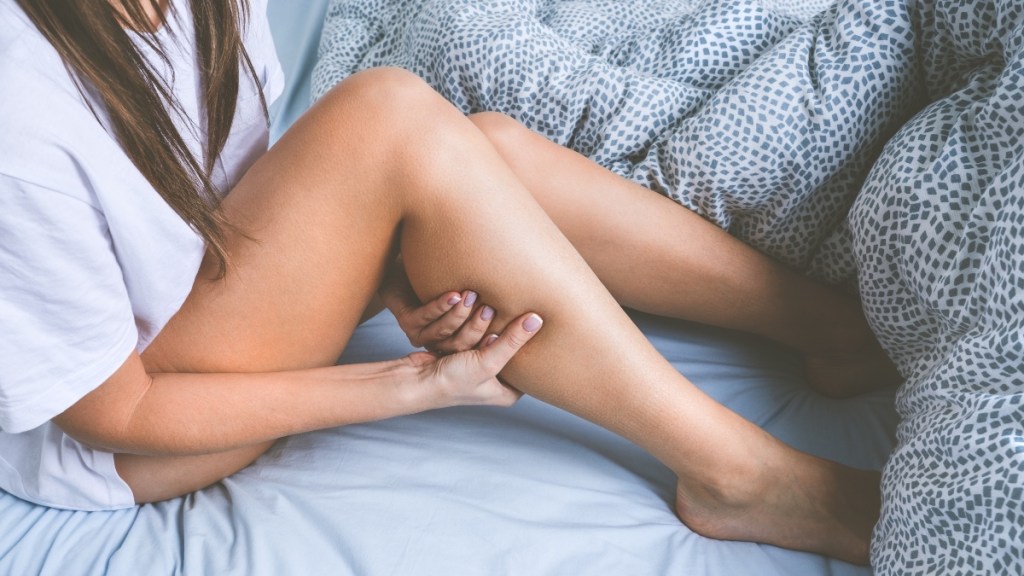
How pickle juice outsmarts leg cramps at night
It might sound strange to some, but more than a dozen studies suggest sipping pickle juice can stop a leg cramp in its tracks, plus outsmart overnight flare ups. You’ve likely heard that it’s the electrolytes in the folk cure that do the trick, but it turns out there’s another ingredient working its magic: acetic acid. “People assume the electrolytes from the sodium help, but by the time they are absorbed, the cramp will likely already be gone,” explains registered dietitian Rhyan Geiger, RDN. That’s because it can take up to 45 minutes for an electrolyte drink to be effective, a study in the Journal of Strength and Conditioning Research suggests.
“The acetic acid may be the hidden hero here,” Geiger says. “When it comes into contact with the back of our throat, it calms down nerve cells.” By calming these cells, they stop firing neurotransmitters (or chemical messengers) that telegraph pain signals. Geiger says that acetic acid enhances communication between neurons and muscles, which then helps legs muscles relax. What’s more, acetic acid in pickle juice helps your body create acetylcholine. This chemical messenger allows leg muscles to contract normally instead of cramping up.
The best way to take pickle juice for leg cramps at night
While it’s true that the electrolytes in pickle juice may not be able to thwart a charley horse attack in the moment, replenishing these key minerals before bed can help block a leg cramp from ever happening the first place. The juice’s combination of acetic acid and electrolytes is so effective, Harvard Medical School research suggests taking a little sip (just ½ oz.) of pickle juice before bed reduces nighttime cramping by as much as 46%. Researchers found the tangy sipper proved significantly more effective than plain tap water at blocking leg cramps.
Fresh out of pickle juice? Spread mustard over a cracker and cheese before bed instead. A Methodist University study found yellow mustard’s high levels of acetic acid makes it another top pick for blocking leg cramping. (Click through for smart ways to use leftover pickle juice in your favorite recipes.)
3 more natural ways to outsmart leg cramps at night
Not a fan of pickle juice or mustard? No problem! These natural home remedies also have the power to block leg cramps from disrupting your sleep.
Stretch out your your legs
“At night, it may be helpful to get up and stretch and massage the muscles,” says Connie Domingo, MD, who works in rehab medicine. Why? Gently stretching your calves and hamstrings before bed relaxes tense muscles and improves oxygen-rich blood flow, making your legs less likely to cramp up. In fact, research out of The University of Sydney found that folks who stretched their legs before bed reduced the frequency of their nighttime leg cramps by as much as 35% in eight weeks.
A move that’s proven to be especially effective: a stair stretch. Pause on the bottom stair, hang your heels over its edge for 30 seconds, then lift onto your toes for 2 seconds. Repeat four times and you’ll reduce nighttime cramping 58%, suggests research in the Journal of Physiotherapy. The “heel hang” trick fully extends muscles without over-stretching them (which can actually increase your chances of cramping). Indeed, it works even better than many more complicated and time consuming stretching regimens. And researchers found that if/when you do experience a cramp, it reduces the severity 18%. (Click through to see how a stair stretch also helps with plantar fasciitis foot pain.)
Enjoy drumsticks and spinach for dinner
As we age, it becomes more difficult for our bodies to absorb cramp-blocking B vitamins. The fix: Grill up drumsticks and a side of spinach for dinner. When teamed up, dark meat chicken and leafy greens boast all of the daily B-complex vitamins the body needs to prevent leg cramps for 86% of folks, suggests research in The Journal of Clinical Pharmacology. Not only do the B vitamins reduce the frequency of charley horses, but they significantly tamp down the intensity and duration if you do experience a flare up. Another option: supplementing with a daily B-complex vitamin to ferry cramp-preventing oxygen and nutrients to tissues.
Bonus: spinach is also rich in potassium, a key mineral that helps stave off cramps. “Consuming potassium-rich foods like bananas, oranges or spinach, and magnesium-rich foods like nuts and whole grains can support muscle function and minimize cramps,” adds physiotherapist Kieran Sheridan. (Click through to see our five favorite chicken leg recipes.)
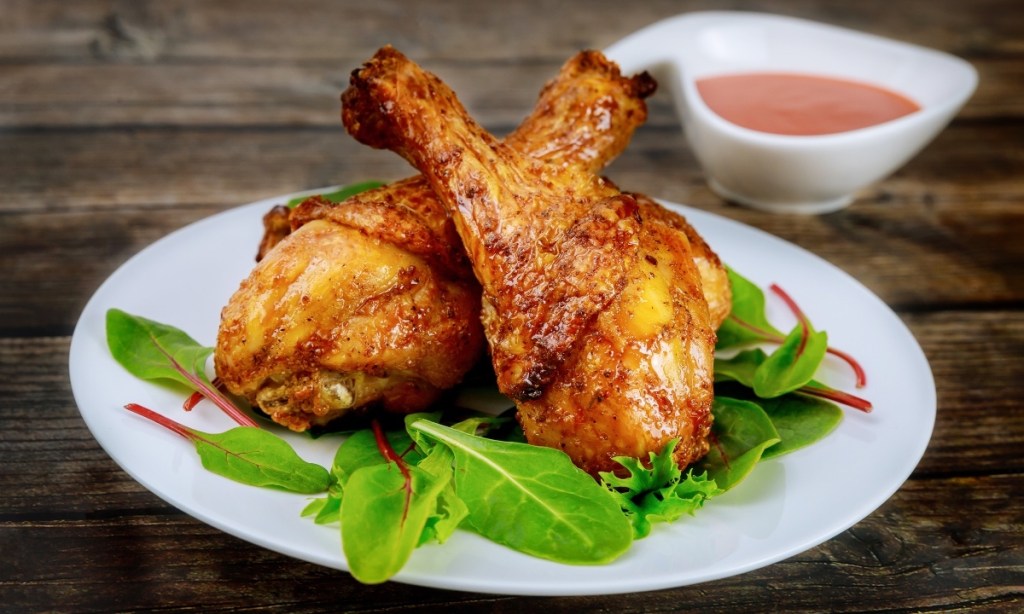
Don’t make the bed
Leaving the end of the bed sheets untucked might block charley horses for up to 58% of folks over age 55 who use top sheets. Nocturnal leg cramps can occur when leg muscles are forced into a shortened position as you sleep, say University of Utah scientists. And a tucked-in top sheet wedges your feet into a pointed “ballerina” position known as plantar flexion. This shortens calf muscles, setting them up for cramping. But simply loosening the sheets allows ligaments and tendons in calves to maintain a naturally relaxed position that blocks charley horses from happening as you sleep.
Regularly have trouble sleeping? Read on to discover more natural ways to improve your slumber:
- Stressed All Day and Can’t Sleep at Night? Psychologist Says *This* Extract Can Solve Both Problems — Naturally
- A Growing Number of Experts Advocate Using Mouth Tape to Improve Sleep—One Woman’s Surprising Experience
- Can’t Fall Asleep? One of These Vitamin or Mineral Deficiencies May Be the Culprit
This content is not a substitute for professional medical advice or diagnosis. Always consult your physician before pursuing any treatment plan.
A version of this article originally appeared in our print magazine, Woman’s World.


